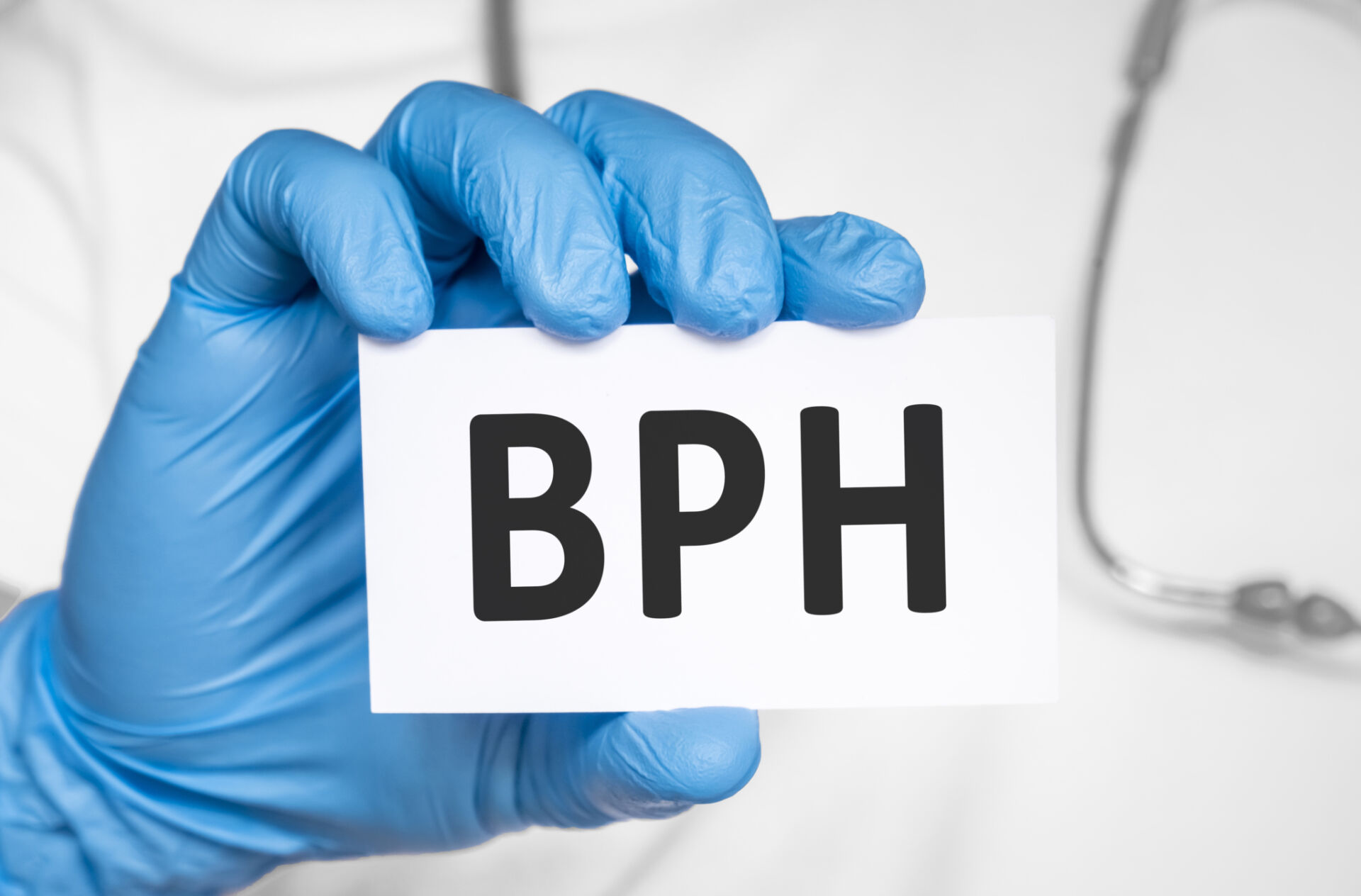
Benign prostatic hyperplasia (BPH) is a condition most common amongst older men in which the prostate gland is enlarged.¹ The prostate is part of the male reproductive system located below the urinary bladder and surrounds the urethra. The main role of the prostate is to produce fluid that nourishes and transports the sperm. When the prostate is enlarged, it can cause other complications such as uncomfortable urination, a blockage of urine flow, and bladder, urinary tract, and kidneys problems. BPH affects approximately 50% of men between the ages of 51 and 60, and up to 90% of men older than 80.²
What causes benign prostatic hyperplasia?
Currently, there is no confirmed cause for the prostate to become enlarged; however, because BPH affects older men, medical professionals cite age as a factor. While the causes are not well understood, one reason could be the balance of sex hormones changing with age.
Men produce testosterone and small amounts of the female hormone estrogen. As men get older, the amount of testosterone decreases, leaving a higher amount of estrogen. Studies have shown that a higher proportion of estrogen promotes cell growth in the prostate.
Other research points to a male hormone called dihydrotestosterone (DHT) as a possible link to BHP. As testosterone levels in the blood drop, older men continue to produce DHT, which may encourage prostate cells to grow. The research shows that men who do not produce DHT don’t develop benign prostate hyperplasia.
Who is more likely to develop benign prostatic hyperplasia?
Although the condition can affect all men, certain risk factors can increase your chances of developing BPH, including:
- Being 40 years of age or older
- A family history of BPH
- Having other medical conditions such as type 2 diabetes and heart disease
- Obesity
- Lack of physical exercise
- Erectile dysfunction
What are the symptoms of benign prostatic hyperplasia?
The symptoms of prostate enlargement vary, and the most common signs include:
- Increased frequency and urgency to urinate
- Increased urination at night
- Weak urine flow or a stream that continually stops and starts
- Difficulty starting urination or blocked urine flow
- Difficulty completely emptying the bladder which can lead to bladder stones, bladder damage, or kidney damage
Some less common signs of BHP are:
- Blood in the urine
- Urinary tract infection
- Unable to urinate
Note that the above symptoms can be related to other health issues. The severity of symptoms is not linked to the size of the prostate. For some men, symptoms gradually worsen, while for others, they stabilize and may improve over time.
What are the therapy options for benign prostatic hyperplasia?
There are a few therapy options for BPH, depending on the severity of your symptoms and what you’re comfortable with. Some of the available options include:
- TULSA-Procedure – A minimally invasive procedure that produces high temperatures using directional ultrasound to target prostate tissue. With this therapy, the heat is delivered from the inside out, sparing anatomical structures around the prostate and minimizing the risk of side effects.³
- Watchful waiting – If your symptoms are mild, you may choose to wait. Some men report that their symptoms improve over time.
- Prescription medications – This can include alpha-blockers that relax the prostate muscles to relieve symptoms, 5-ARIs to help shrink the prostate, and PDE5 inhibitors that improve symptoms by increasing the flow rate.
- Lifestyle change – Because risk factors include obesity and lack of exercise, a lifestyle change can help in reducing your chances of developing BPH.
- Surgery – Traditional, invasive surgery or a non-invasive option is typically meant for patients with severe symptoms that have led to kidney damage, consistent UTIs, bladder stones, and urinary retention.
All cases are different. If you suspect you have BPH or have been diagnosed with the condition, speak to your doctor about therapy or treatment plans that are best for you.
References:
- “Benign prostatic hyperplasia (BPH)” – Mayo Clinic Staff – MayoClinic.org
- “Prostate enlargement (benign prostatic hyperplasia)” – Simon – National Institute of Diabetes and Digestive and Kidney Diseases – NIDDK.nih.gov
- “Magnetic resonance imaging-guided transurethral ultrasound ablation for benign prostatic hyperplasia: 12-month clinical outcomes of a phase I study” – Viitala – BJU International – Wiley Online Library
Aug 5, 2021 | Cole Parrish
 Find a Center
Find a Center Contact Us
Contact Us